How to Choose the
Best Wading Boots
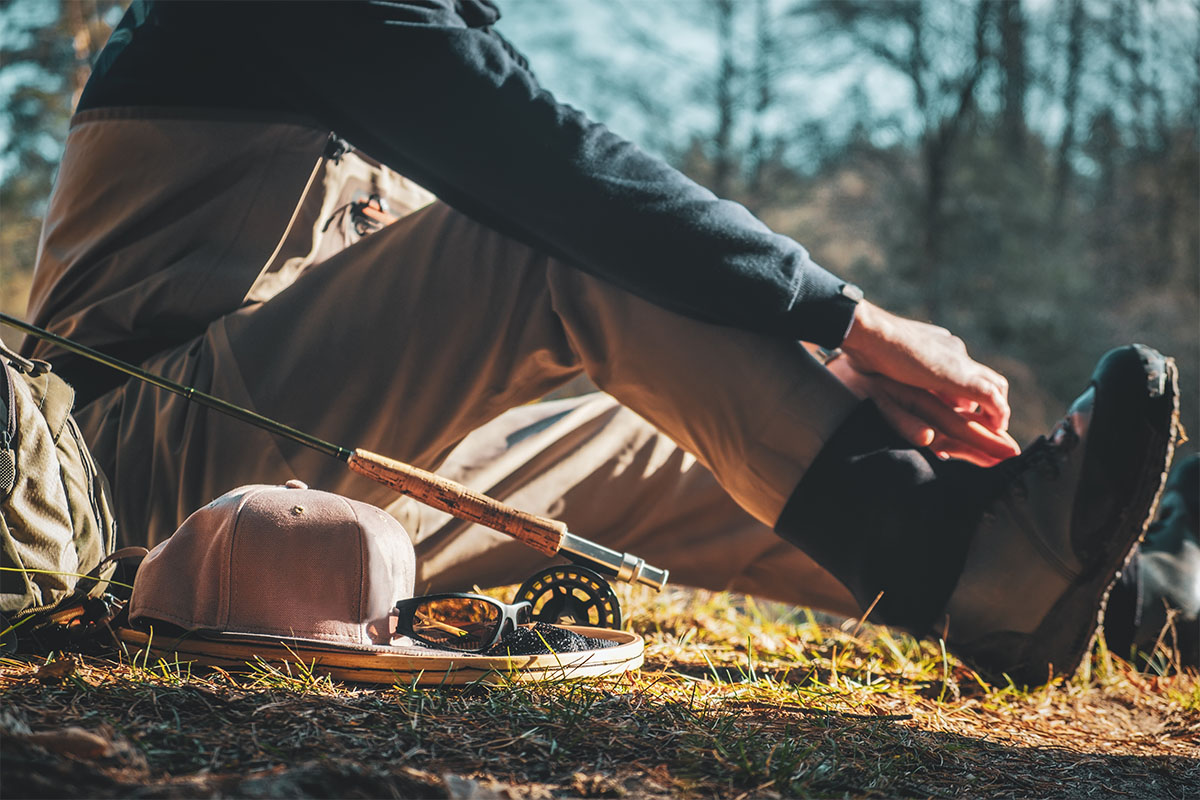
Battling the current while fishing can be a difficult task. That’s where a high-quality pair of wading boots can be very helpful. Robust, well-made wading boots will keep you firmly planted in place and can make all the difference when it’s time to reel in that trophy fish.
When you’re purchasing a wading boot, you’ll need to consider whether you want a rubber, felt, or cleated sole; whether the heels and padding of your boots show the proper support; whether you want hiking-, work-, or sneaker-style boots; whether you prefer microfiber or synthetic boots; and of course, the best size for your foot and sock.
Similar to hiking boots, wading boots are intended to provide the wearer with support, comfort, and traction. Wading boots are sometimes worn with a pair of stockingfoot waders to keep you dry, or they may be your only piece of footwear.
Features to Consider in Wading Boots
Like most fishing equipment that you can buy, wading boots have a variety of features and qualities that are optimized for different water conditions. When you’re looking to buy a pair, make sure you know what you’ll be using your boots for and what conditions you’ll be working in.
Some things you should take into consideration for your wading boots are the sole, style, fit, and material. By looking at each of these aspects, you can find the perfect boots for your next trip.
Soles
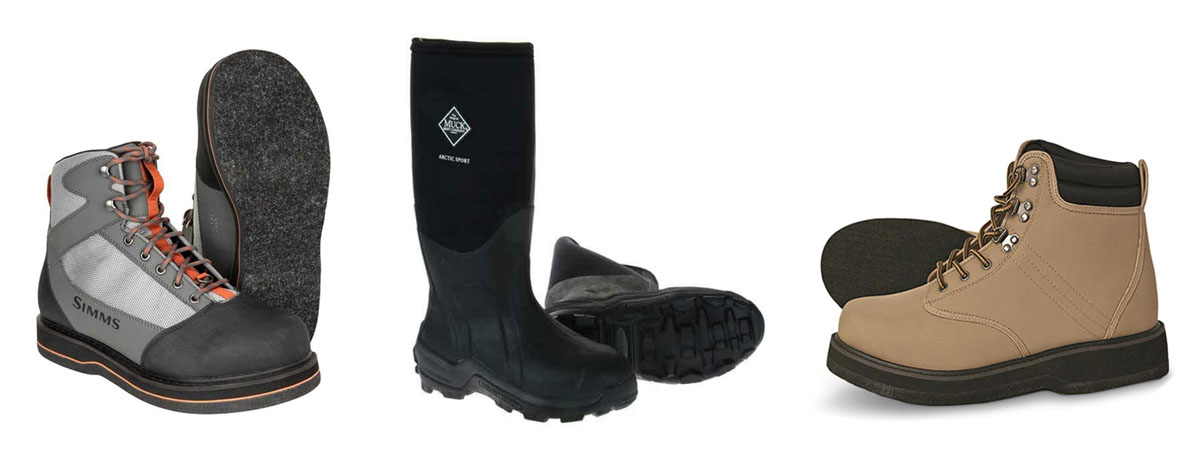
One of the most important parts of a good wading boot is the sole. The sole should provide excellent balance and traction while you trek through rivers, streams, and creeks. There are essentially three different varieties of wading boot soles available to fishermen today: rubber, felt, and cleated.
Rubber Soles
If you anticipate yourself taking long hikes to get to your fishing spot, rubber soles are a great option. Rubber soled wading boots are built similarly to hiking boots, with fantastic durability, sturdiness, and traction. You may even hear rubber-soled wading boots referred to as ‘hiking-soled’ wading boots. Not only do rubber soles provide excellent traction in muddy rivers, but they are very easy to clean.
Felt Soles
Although it may seem unlikely that a cloth-soled boot would be able to handle wet conditions, felt-soled boots excel in the water. Felt soles provide great traction over slimy rocks, moss, and debris and excel in the water, though they are not as durable as rubber soles and take longer to dry.
However, some states have outlawed the use of felt-soled boots. Felt soles don’t dry as quickly as rubber soles, so they are liable to carry bacteria and invasive species from one fishing location to the next. Be sure to review your local fish and wildlife regulations before buying felt- soled boots.
Cleated Soles
For particularly treacherous conditions, many anglers use cleated (or studded) wading boots. Cleated boots offer very efficient traction and a secure grip in rough waters and mossy patches.
However, if you often wade through mud, cleated boots are going to be very difficult to clean. For a versatile cleated solution, you can buy a pair of wading cleats that slide over rubber or felt-soled wading boots.
Here’s a quick summary of the types of soles so you can decide which is best for you:
| Rubber soles |
|
| Felt soles |
|
| Cleated soles |
|
Superior Support
Rolling currents and floating debris can be treacherous, so it’s important that your wading boots provide support for your ankle and foot. Make sure the wading boots you choose have a sturdy heel and additional padding around the collar of the boot. This can help mitigate the risk of rolling your ankle in the water.
When you’re evaluating the support of your wading boots, check the following:
- Your heel should not be lifting inside your boot with each step -- this can increase the chances of injury or slippage.
- Make sure your boots are laced very tightly.
- A wide tongue can help support your foot, and it will stay cleaner if the tongue is sewn into the boot itself.
- Toe and heel caps can protect your feet from loose rocks underwater.
Style & Material
Wading boots are available in many different styles, designed for the conditions they will likely encounter.
- Hiking-style boots are a good fit for the rocky rivers that fishermen often encounter.
- Work-style boots are a good fit for extreme conditions.
- Sneaker-style boots are best for shallow, calm waters when the fisherman can prioritize their comfort.
No matter what style of wading boot you think is best, be sure that the materials and construction can withstand your fishing conditions. Keep in mind that wading boots are not meant to be waterproof: they should allow water to freely pass through the structure, and you can wear stockingfoot waders underneath to keep your socks dry.
Many wading boots feature synthetic or microfiber construction. This allows you to move downstream without absorbing water weight into your boots. Check whether your boots have drainage holes, which let water easily flow through and around your feet as you wade. You might also find some high-end wading boots that are coated with a Durable Water Repellant. This will help your boots block water absorption.
Wader Boot Sizing
Sizing for wading boots is going to be different than everyday footwear. We suggest going one size larger than normal in your wading boots to properly accommodate the neoprene stockingfoot waders. If you anticipate wearing wool socks in the colder months, you may even want to go 1 ½ sizes up. Be aware that sizes can vary among wading boots: some manufacturers have taken this need for extra space into account, while others have not. Check whether the seller features a size guide on their website, and use this to make your purchase.Wading Boots
Now that you know the must-have features of any wading boot, you’re ready to start shopping. These wading boots have all been vetted by the experts at Sportsman’s Warehouse, and we provide boots with high quality support and durability in a variety of styles and soles. As you’re shopping, consider the features we’ve reviewed today so you can make sure your boots meet your unique needs and specifications!
Caddis Thick Neoprene Ripple Sole Wading Boots
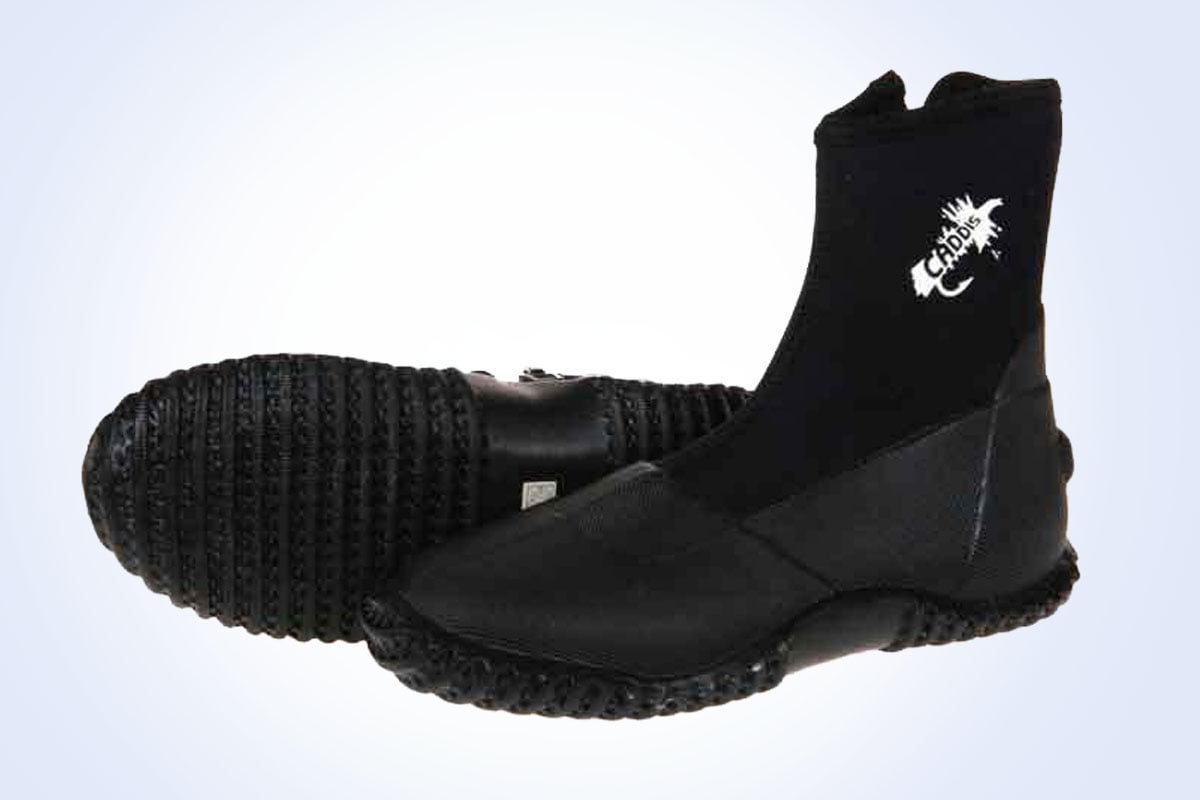
Extra thick soles help you keep traction in mud, sand, and other slippery terrain. If you want the grip of felt while still getting the durability and safety of a rubber sole, these boots provide an answer. The side zippers make the boots easier to take on and off, and they come with cushioned insoles and reinforced toes and heels. These boots will fit over waders and are an excellent option for fishing and kayaking.
Redington Women’s Willow River Felt Boot
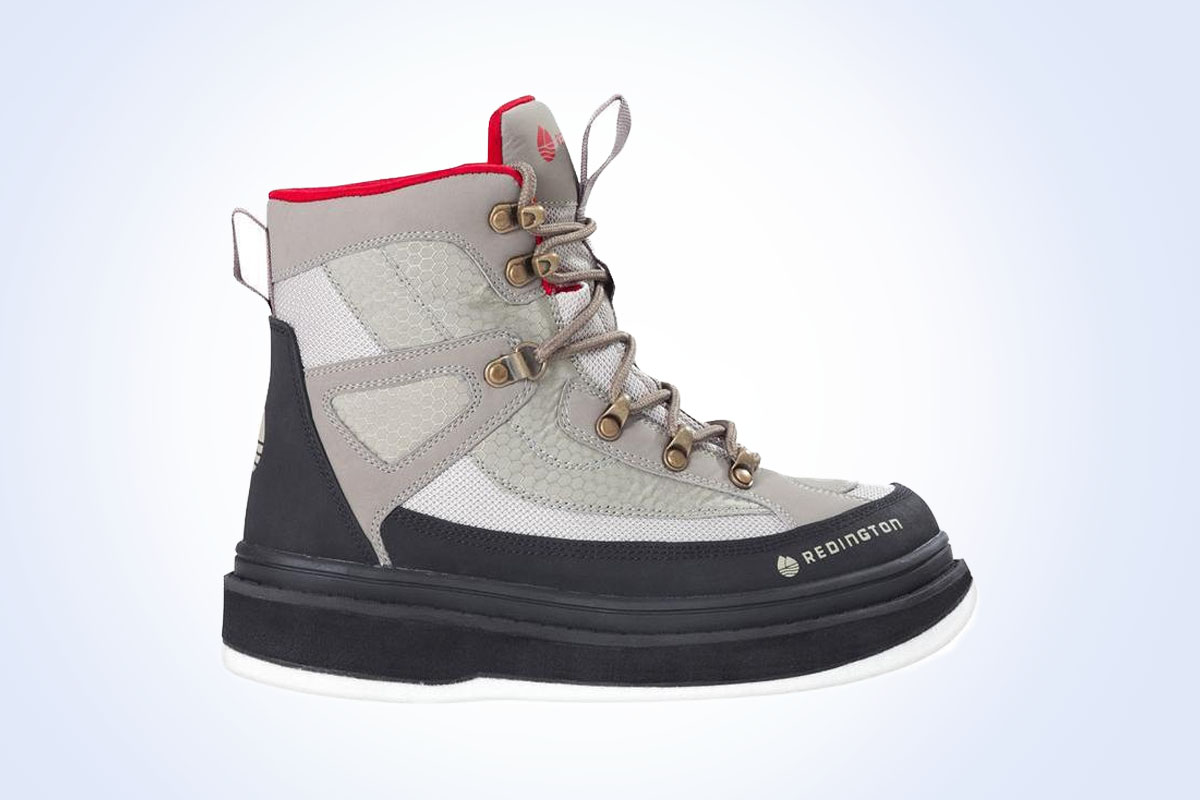
Reddington creates felt boots for the added traction and comfort that many anglers need. They are specially designed for female anglers and to fit the female foot. These boots are quick drying, with a lightweight build. They are also compatible with studs if you’re planning to cross more difficult terrain. These boots come with extra padding for your comfort, including extra padding around the collar to support your ankles as you work through difficult terrain.
Korkers Buckskin OmniTrax Kling On Sole Wading Boots
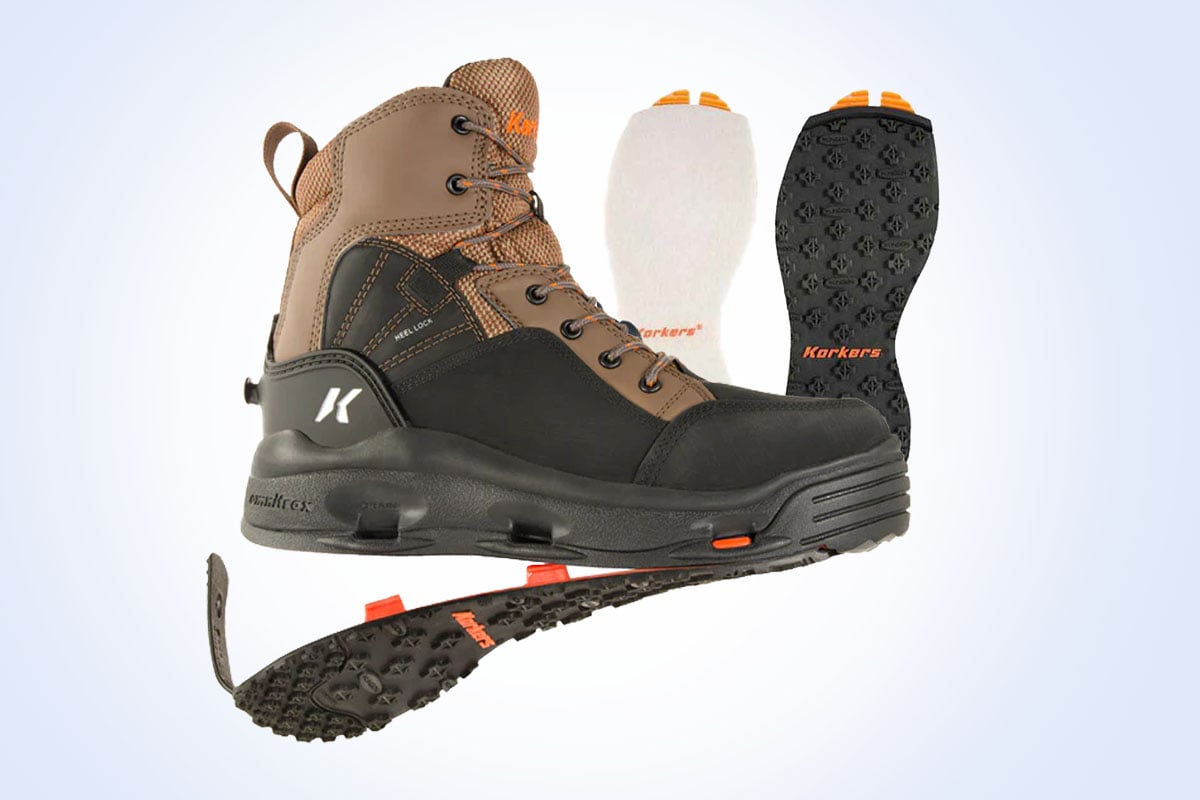
The unique innovation of this offering from Korkers is the OmniTrax system. These allow you to switch out the actual soles of your boots based on the conditions you’ll be moving through. If you weren’t sure which soles would be the best fit for you, OmniTrax allows you to switch between rubber and felt soles based on your needs – and even the regulations of your state if you’ll be traveling! These boots have hydrophobic materials to facilitate quick drying, metal lacing hardware that will last through many trips, and removable insoles to adjust for your comfort and the size of your waders.
Orvis Men’s Clearwater Wading Fishing Boots

This rubber sole boot brings the rubber material to the toe, vamp, and heel to make your boots extra durable. The upper boot is full synthetic leather, providing a comfortable material for your foot. The outsoles feature an aggressive lug design, and place studs strategically to help you grip onto your tricky terrain more easily. These studs are a great idea especially for wintry conditions.
Caddis Men’s EcoSmart Grip Wading Boots
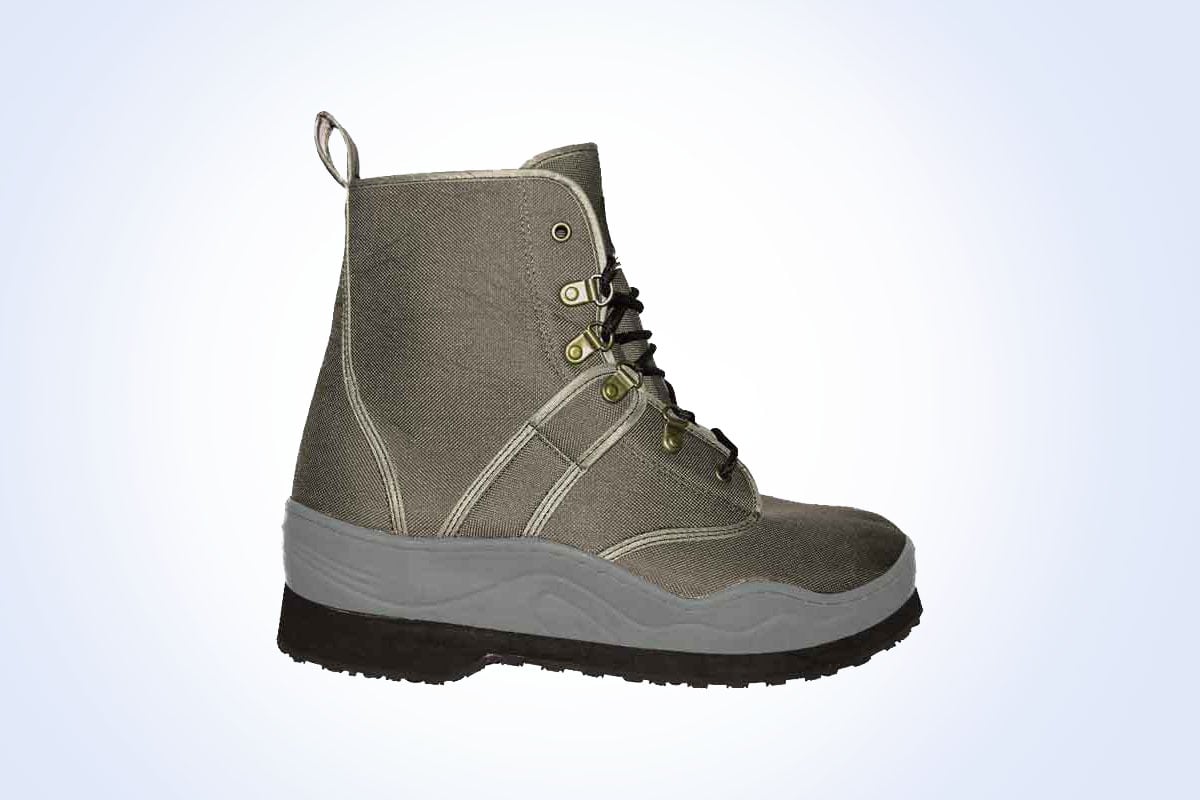
Caddis boots feature the EcoSmart outsole, a rubber sole which will help you grip onto your surroundings. The toes and heel are reinforced, and the upper is made of nylon for durability and comfort. These boots are quite easy to get on and off, and come with speed laces and a cushioned insole.
Frogg Toggs Men’s Anura II
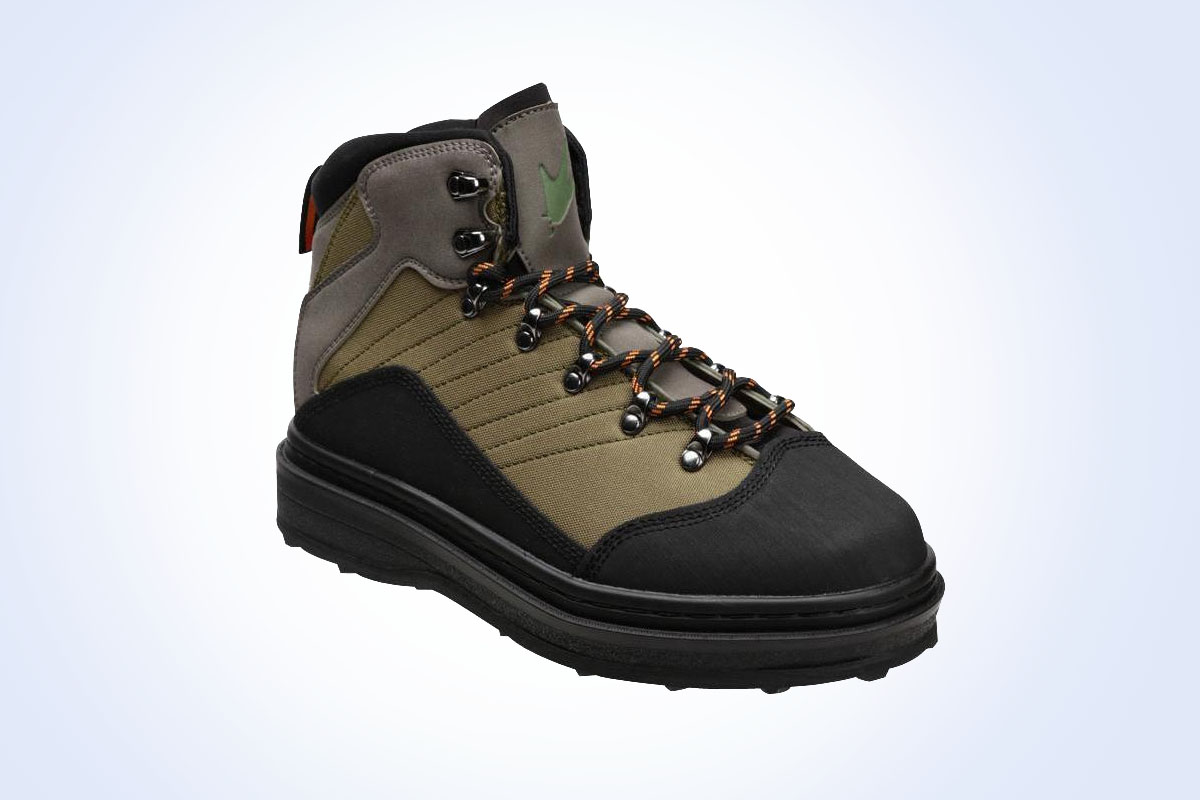
This cleated sole boot brings extra traction for extra challenging conditions. The midsole is molded from polyurethane, and the padded collar keeps your ankle more comfortable. The upper is made from 900D Cordura and leather, and the tongue is made from neoprene. If you like the boot but think the cleated option might be overkill for the terrain you’re planning to work in, this boot is also available in a felt outsole.